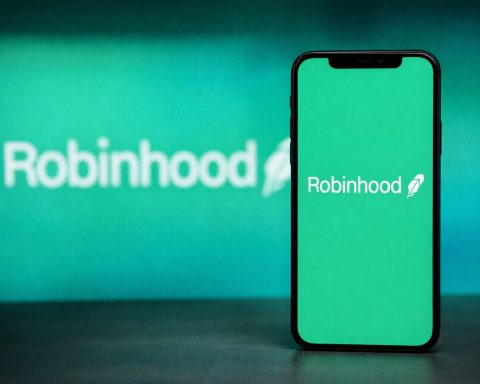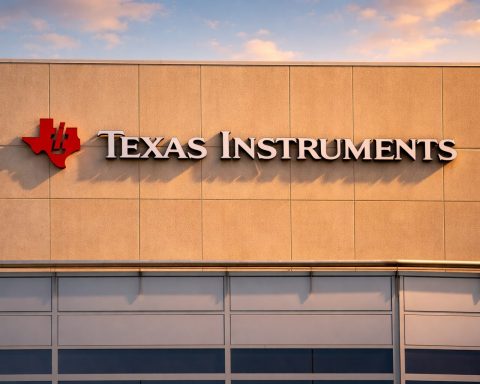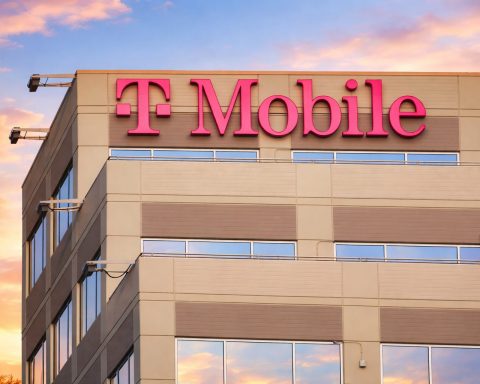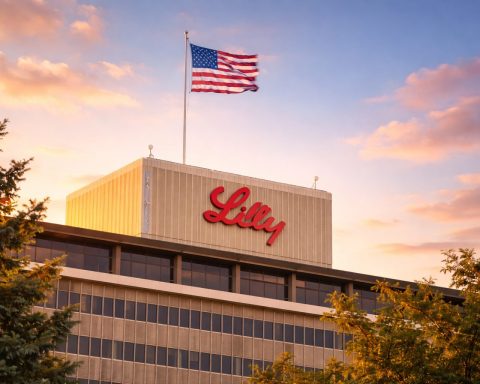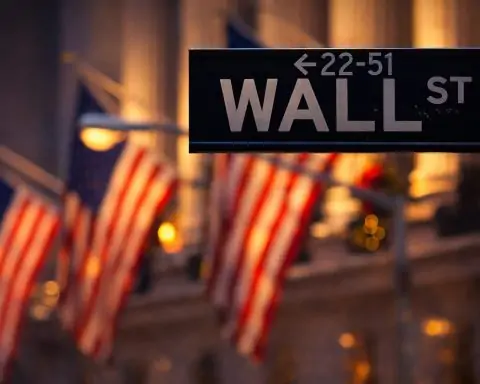- Apple is reportedly in early talks to use Google’s Gemini AI to power Siri, a Bloomberg leak that sent Alphabet stock up 3.7% and Apple up 1.6%.
- Meta Platforms signed a deal with Midjourney to license its image-generation tech for Meta’s future AI products, linking Meta and Midjourney’s research teams under Meta’s new Superintelligence Labs.
- Waymo received its first permit to test self-driving robotaxis in New York City, enabling limited testing with safety drivers in Manhattan and Brooklyn.
- Nvidia revealed six brand-new chips on TSMC lines for its Rubin supercomputer architecture, including a new GPU and a silicon-photonics processor, with Huang calling every chip revolutionary.
- The U.S. government agreed to a 15% royalty on certain AI chip sales to China, while Nvidia is developing a China-bound B30A chip based on Blackwell to meet rules.
- The White House reportedly plans to acquire a 10% stake in Intel as part of broader moves to take equity in chipmakers in exchange for federal chip-factory grants.
- Databricks agreed to acquire Tecton as part of its push into AI agents, with Tecton’s Coinbase-like clients and Databricks valued north of $100 billion after a fresh funding round.
- OpenAI is raising around $40 billion in a primary round led by SoftBank, plus about $6 billion in a secondary sale by current and former employees, at a roughly $500 billion valuation, with ChatGPT at 700 million weekly users and $12 billion annual run-rate revenue.
- A MIT study found that 95% of organizations see no return on their AI investments yet, fueling ongoing skepticism about the AI boom.
- Fed Chair Jerome Powell signaled a potential rate cut as soon as September, helping lift tech stocks and sending the Nasdaq up about 1.9% in one day amid renewed AI optimism.
Tech Giants Double Down on AI Initiatives
Apple’s Siri Surprise: In a rare partnership twist, Apple is reportedly in early talks to use Google’s next-gen Gemini AI to revamp Siri. The leak, first reported by Bloomberg, sent Alphabet’s stock up 3.7% and Apple up 1.6% on Friday [1] [2]. Apple has lagged rivals in deploying generative AI features, so it approached Google about a custom large-language model to power a “smarter” Siri next year [3]. The iPhone maker has not decided whether to stick with its in-house tech or partner externally, but the mere prospect of a Google-Apple AI alliance jolted investor enthusiasm [4] [5]. As one analyst noted, “Apple has been behind the curve in AI, so tapping Google’s model could be a game-changer” – a signal that even fierce competitors may team up amid the AI race.
Meta’s Visual AI Push: Meta Platforms also made waves by partnering with Midjourney, the popular image-generating startup. Meta’s chief AI officer Alexandr Wang announced a deal to license Midjourney’s “aesthetic” generative AI tech for Meta’s future products [6] [7]. The collaboration will link Meta’s and Midjourney’s research teams, aiming to boost the visual quality of Meta’s AI models and keep pace with rivals like OpenAI and Google [8]. Midjourney’s image-generation prowess could help Meta lower content creation costs and drive user engagement [9] [10]. The move comes as Meta reorganizes its AI efforts under a new Superintelligence Labs division following mixed reviews of its last Llama model [11]. It signals an aggressive strategy to catch up in generative AI – “We are incredibly impressed by Midjourney,” Wang said, touting partnerships and top talent as key to Meta’s AI roadmap [12] [13].
Autonomous Ambitions: In the transportation realm, Alphabet’s Waymo notched a regulatory win. Waymo received its first-ever permit to test self-driving vehicles in New York City – a market long off-limits to driverless cars [14]. Mayor Eric Adams announced that Waymo can immediately begin limited testing of its robotaxis (with safety drivers) in parts of Manhattan and Brooklyn [15] [16]. Until now Waymo’s cars only collected data on NYC streets; this permit lets it advance its autonomous ambitions in one of the world’s most challenging driving environments. The robotaxi race is heating up: Tesla launched a limited driverless service in Austin in June and aims to expand to cover half the U.S. by year-end [17] [18]. Waymo’s entry into New York – after 10+ million rides completed in cities like San Francisco and Phoenix – underscores how major AI players are pushing into new domains as regulations slowly evolve [19].
Chipmakers & Policy: Nvidia’s Next Moves and U.S.-China Deals
Nvidia’s AI Chip Empire: As the world’s most valuable semiconductor firm, Nvidia spent the week navigating geopolitical and product frontiers. CEO Jensen Huang made a high-profile trip to Taiwan on Friday to visit key partner TSMC, just days ahead of Nvidia’s Aug. 27 earnings report [20] [21]. Huang revealed that Nvidia has “taped out” (finalized) six brand-new chips on TSMC’s lines – including a new GPU and a silicon-photonics processor – for its next-generation “Rubin” supercomputer architecture [22] [23]. “This is the first architecture in our history where every single chip is new and revolutionary,” Huang remarked, thanking TSMC for its critical role [24]. Investors will be watching Nvidia’s earnings closely; after becoming the first company ever to top a $4 trillion market cap last month, the AI chip giant’s comments on demand could sway the entire tech sector [25]. Any signals from this AI bellwether on enterprise spending or supply constraints will have broad ramifications [26] [27].
US–China Semiconductor Truce: Nvidia also grabbed headlines with a unique arrangement brokered with Washington. President Donald Trump’s administration reached a deal with Nvidia and AMD that allows them to keep selling certain advanced AI chips to China – but with a catch. The U.S. government will take 15% of the revenue from those China sales as a form of royalty [28]. This unprecedented deal, floated by Trump earlier in August, effectively opens the door for Nvidia to offer a successor to its export-capped H20 AI chip in China [29] [30]. In fact, Reuters revealed Nvidia is already developing a new “B30A” chip (based on its latest Blackwell architecture) that would outperform the H20 while adhering to U.S. rules [31]. Huang confirmed Nvidia is in talks with U.S. officials about a next-gen China-bound chip, but emphasized “it’s up to… the U.S. government” to approve it [32]. Nvidia had only just resumed Chinese H20 shipments in July after a ban in April [33], so this revenue-sharing pact illustrates the high-stakes balancing act between national security and tech profits. Meanwhile, the U.S. Commerce Department – led by Howard Lutnick – is eyeing even bolder measures: reports emerged that the government might take equity stakes in chipmakers like Intel in exchange for federal chip-factory grants [34] [35]. In fact, by Saturday a White House source confirmed plans for the U.S. to acquire a 10% stake in Intel, underscoring Washington’s hands-on approach to securing the AI supply chain [36].
Market Whiplash: From AI Stock Jitters to Rally Resurgence
Bubble Fears Hit Tech: Earlier in the week, investors were openly debating “AI fatigue.” After months of meteoric gains, AI-linked stocks stumbled amid warnings that the frenzy may be overdone [37] [38]. The tech-heavy Nasdaq entered a brief pullback, and high-fliers took a hit – Nvidia’s shares slid about 5% and Palantir Technologies plummeted 16% from recent highs [39] [40]. A study from MIT added fuel to the skepticism, finding 95% of organizations see no return on their AI investments so far [41]. Even Sam Altman, CEO of ChatGPT-maker OpenAI, cautioned that investors might be getting “overexcited” about AI, remarks that rang alarm bells for some traders [42]. “Gnawing doubts” about an AI bubble helped push Wall Street into the red through mid-week, as one market strategist noted this volatility is now “par for the course” and advised rethinking outsized tech exposure [43]. Fund flow data showed a notable pullback: tech sector-focused funds saw $613 million in outflows last week, and overall global equity inflows collapsed to just $2.3 billion from over $19 billion the week prior [44] [45]. Clearly, sentiment had become frothy, and many big investors were trimming positions during what is historically a tough late-August season.
Resilient Optimism Returns: By Friday August 22, however, the mood flipped decisively bullish. In a highly anticipated Jackson Hole speech, Fed Chair Jerome Powell hinted that a rate cut was likely coming as soon as September, sending a wave of relief through markets [46] [47]. Investors piled back into tech stocks, driving the Nasdaq up ~1.9% in a single day and lifting the Dow Jones to a record-high close [48] [49]. AI-centric names rebounded sharply. Alphabet and Apple extended gains thanks to the Siri-Gemini news, and even earlier laggards saw buying interest as traders decided the “AI craze” still has legs. “These are price corrections, not a ‘reckoning’ with the AI theme,” affirmed Andrew Almeida of XYPN Investments, noting that the big-picture demand for AI infrastructure remains intact despite short-term pullbacks [50]. Indeed, some analysts argue that mega-cap tech stocks are under-owned by institutions relative to their size, leaving room for further upside [51] [52]. UBS strategists also pointed out that tech earnings have been robust – cloud revenue at top firms grew over 25% last quarter – and AI integration is poised to boost profit margins in coming quarters [53] [54]. In short, while the AI stock frenzy took a breather amid bubble fears, renewed confidence in both macro (Fed policy) and micro (AI business fundamentals) helped market leaders regain momentum by week’s end.
Deals, Funding, and IPO Buzz in AI
Databricks’ Latest AI Buyout: In the private markets, the AI arms race continued unabated. Data analytics giant Databricks announced an agreement to acquire Tecton, a Sequoia-backed machine learning startup, as part of its push into “AI agents” for businesses [55]. The deal (for an undisclosed sum of Databricks stock) is the latest in a string of big-ticket AI acquisitions by Databricks, which just this week also confirmed a fresh funding round valuing it north of $100 billion [56] [57]. Tecton specializes in low-latency data pipelines – a perfect fit to speed up Databricks’ new Agent Bricks platform for building AI workflow agents [58] [59]. “It’s really the real-time building block to feed information into the agents,” explained Databricks CEO Ali Ghodsi, emphasizing that fast data is crucial for interactive AI use cases like voice assistants. “Many use cases are human-facing, and humans hate to wait,” Ghodsi quipped, underscoring why Tecton’s tech for snappier AI responses was so attractive [60]. The acquisition is also a strategic customer play – Tecton’s clients (which include Coinbase) already overlap heavily with Databricks’, so buying Tecton could deepen those relationships [61] [62]. Databricks has been on an AI shopping spree, having previously scooped up generative AI startup MosaicML for $1.3 billion in 2023 and database firm Neon for $1 billion earlier this year [63]. Flush with cash from its skyrocketing valuation, Databricks is cementing an end-to-end AI stack via M&A – a sign of growing consolidation as bigger players absorb cutting-edge AI teams.
Big Funding and IPO Signals: Massive capital is also flowing into the sector. OpenAI, the company that kicked off the generative AI wave, is reportedly in the midst of a blockbuster fundraise led by Japan’s SoftBank. Current and former OpenAI employees are looking to sell $6 billion worth of their shares to investors including SoftBank and Thrive Capital, at a valuation around $500 billion – up from $300 billion just months ago [64] [65]. This secondary sale would complement a primary funding round of $40 billion that SoftBank has agreed to lead, underscoring the staggering bets being placed on AI’s future [66]. OpenAI’s revenues have surged – doubling in the first 7 months of 2025 to an annual run-rate of $12 billion – and the company now boasts 700 million weekly users for ChatGPT (though fewer than 10% are paid subscribers) [67] [68]. The hype is immense: a Reuters Breakingviews analysis warned that valuing OpenAI at half a trillion dollars reflects “immense faith in a still-immature business model,” a risk factor for the entire AI startup ecosystem [69] [70]. Rival startup Anthropic is also reportedly seeking new funding at valuations as high as $150–170 billion [71], nearly triple its last round, as investors race not to miss the next AI giant. Meanwhile, the IPO window is creaking open after a long freeze – sources say over a dozen tech companies have filed confidentially, many in AI-related fields [72] [73]. Recent offerings like AI cloud provider CoreWeave and digital health firm Hinge Health were well received, bolstering confidence that public markets are ready to embrace high-growth AI plays again [74]. The first half of 2025 saw $162.8 billion poured into U.S. startups – up 75% year-on-year – with AI deals accounting for an astonishing 64% of total venture deal value [75] [76]. From multi-billion corporate tie-ups to record-breaking venture rounds, the past two days’ news highlights that the AI gold rush remains in full swing, even as investors grapple with how to price both the opportunities and the risks of this transformative technology.
Regulation and Outlook: Navigating the AI Era
Regulators and policymakers are increasingly entwined with AI’s trajectory. Beyond the U.S. government’s intervention in chip sales and potential Intel stake, officials worldwide are crafting new rules for AI. In Europe, authorities continued debating the EU’s sweeping AI Act, aiming to set guardrails on everything from generative AI to biometric surveillance (though no major decisions landed on Aug 22–23). In the U.S., a patchwork of state-level AI laws is taking shape, even as Big Tech lobbies for federal standards to preempt a compliance nightmare [77] [78]. Notably, Trump in May signed the TAKE IT DOWN Act, requiring swift removal of non-consensual deepfake images [79] – a law prompted by AI’s darker use cases that could impact social media platforms like Meta. On the positive side, government agencies are also embracing AI: the Pentagon announced plans to invest in AI-enabled defense systems, and the FDA is exploring faster approval pathways for AI-driven medical diagnostics. Such moves could create new markets for AI companies, but also invite scrutiny around ethics and safety.
Market watchers say the coming weeks will be pivotal. The enthusiasm vs. skepticism tug-of-war in AI stocks may continue as investors digest actual performance. Next week’s Nvidia earnings and guidance will be a crucial litmus test – any hint of demand slowdown could spook the market, while strong results might reignite an AI rally. Likewise, further clarity on interest rate cuts or government tech policies could swing sentiment. For now, the consensus is that we are witnessing a healthy “reality check” on the AI boom rather than the end of it. As one investment chief put it, “the big picture is clear – more people will be investing more dollars in AI infrastructure”, and short-term dips are “certainly not a reckoning” for the AI theme [80]. In other words, even after a whirlwind 48 hours of news, the transformative promise of artificial intelligence continues to drive big bets, bold headlines, and volatile but upward-trending markets – a new normal for investors in 2025.
Sources: Bloomberg; Reuters; CNBC; Financial Times; TechCrunch; Official company statements [81] [82] [83] [84] [85] [86].
References
1. www.reuters.com, 2. www.reuters.com, 3. www.reuters.com, 4. www.reuters.com, 5. www.reuters.com, 6. www.reuters.com, 7. www.reuters.com, 8. www.reuters.com, 9. www.reuters.com, 10. www.reuters.com, 11. www.reuters.com, 12. www.reuters.com, 13. www.reuters.com, 14. www.reuters.com, 15. www.reuters.com, 16. www.reuters.com, 17. www.reuters.com, 18. www.reuters.com, 19. www.reuters.com, 20. www.reuters.com, 21. www.reuters.com, 22. www.reuters.com, 23. www.reuters.com, 24. www.reuters.com, 25. www.reuters.com, 26. www.reuters.com, 27. www.reuters.com, 28. www.reuters.com, 29. www.reuters.com, 30. www.reuters.com, 31. www.reuters.com, 32. www.reuters.com, 33. www.reuters.com, 34. www.reuters.com, 35. www.investopedia.com, 36. www.reuters.com, 37. www.reuters.com, 38. www.reuters.com, 39. www.reuters.com, 40. www.reuters.com, 41. www.reuters.com, 42. www.reuters.com, 43. www.reuters.com, 44. www.reuters.com, 45. www.reuters.com, 46. www.reuters.com, 47. www.reuters.com, 48. www.reuters.com, 49. www.reuters.com, 50. www.reuters.com, 51. www.investopedia.com, 52. www.investopedia.com, 53. www.investopedia.com, 54. www.investopedia.com, 55. www.reuters.com, 56. www.reuters.com, 57. www.reuters.com, 58. www.reuters.com, 59. www.reuters.com, 60. www.reuters.com, 61. www.reuters.com, 62. www.reuters.com, 63. www.reuters.com, 64. www.reuters.com, 65. www.reuters.com, 66. www.reuters.com, 67. www.reuters.com, 68. www.reuters.com, 69. www.reuters.com, 70. www.reuters.com, 71. www.reuters.com, 72. www.reuters.com, 73. www.reuters.com, 74. www.reuters.com, 75. www.reuters.com, 76. www.reuters.com, 77. www.pymnts.com, 78. www.pymnts.com, 79. www.mintz.com, 80. www.reuters.com, 81. www.reuters.com, 82. www.reuters.com, 83. www.reuters.com, 84. www.reuters.com, 85. www.reuters.com, 86. www.reuters.com


